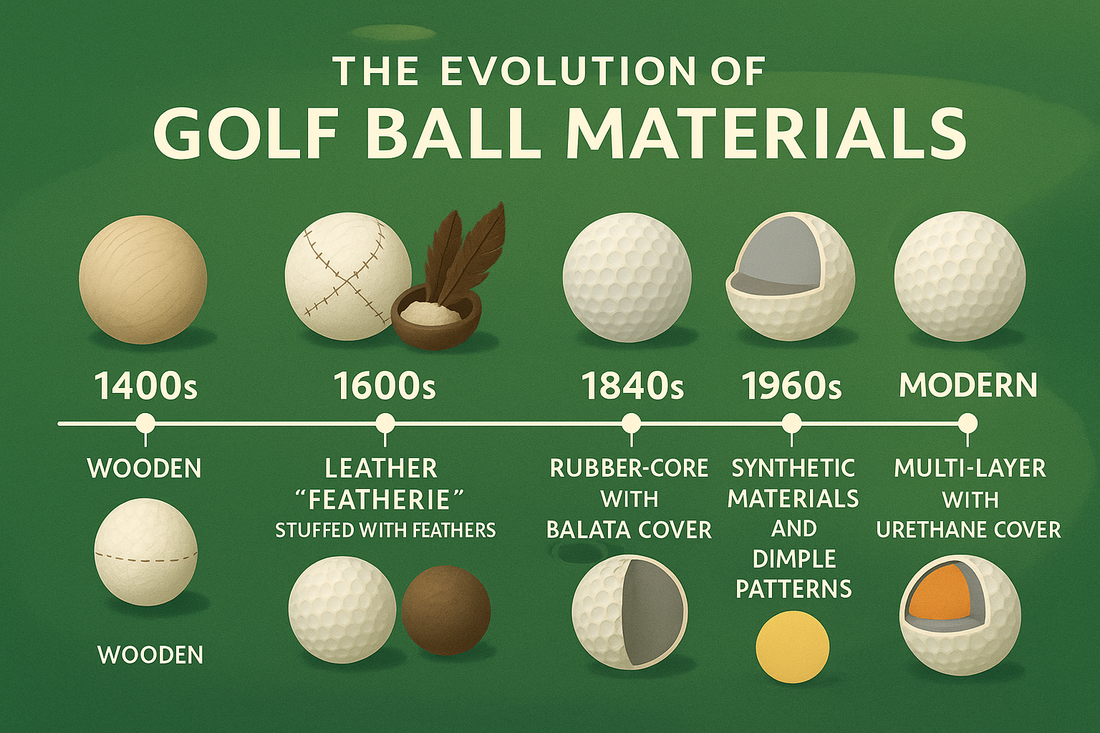
The Evolution of Golf Ball Materials: A Timeline
Share
Golf balls have come a long way since their humble beginnings, evolving from simple wooden spheres to high-tech, multi-layered constructions. Let's take a look at the timeline of materials used in golf ball manufacturing.
Featherie Golf Balls (17th century)
In the 17th century, golf balls were made from leather and stuffed with feathers. These "featherie" balls were handcrafted and expensive, making them a luxury item for the elite.
Gutta Percha Golf Balls (19th century)
In the 19th century, gutta percha, a natural rubber-like material derived from the sap of the sapodilla tree, revolutionized golf ball manufacturing. Gutta percha balls were cheaper to produce and more durable than featherie balls.
Early Rubber Golf Balls (20th century)
As technology advanced, rubber became the material of choice for golf balls. Early rubber balls featured a solid rubber core, providing better distance and durability on the course.
Two-Piece Golf Balls (1960s)
In the 1960s, the two-piece golf ball was introduced, featuring a solid rubber core and a durable cover. This design offered improved distance and control, making it popular among golfers of all skill levels.
Multi-Layer Golf Balls (2000s)
Advancements in materials science led to the development of multi-layer golf balls in the 2000s. These balls feature a variety of materials, including rubber, urethane, and ionomer, each layer designed to optimize performance for different aspects of the game.
The Future of Golf Ball Materials
As technology continues to evolve, so too will the materials used in golf ball manufacturing. From advanced polymers to nanomaterials, the future of golf balls holds endless possibilities for improving performance on the course.
Whether you prefer the classic feel of a featherie ball or the cutting-edge technology of a multi-layer design, the evolution of golf ball materials is a testament to the ongoing innovation in the sport of golf.
